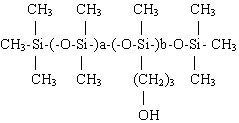Tony O’Lenick explores the differences between a silanol and a carbinol.
Silanol and carbinol both refer to a class of silicone compounds that have hydroxyl groups (OH). Both types of compound are more polar than silicone fluids (dimethicone). Silanol compounds have an Si-OH group. Prior to 1999, they were referred to as dimethiconol. They are found commonly in hair gloss formulations.

Carbinol compounds are a class of polar silicone in which the hydroxyl group is attached to a carbon atom. They are available in three types of molecules. The most common is the comb or rake structure. In this type of structure, the organofunctionality is on an internal position.

Comb Structure
The second type of compound is one in which the organofunctionality is present at the terminal ends.

Terminal Structure
Finally, there are silicone compounds in which there are both internal and terminal groups, called multifunctional structures.

Multifunctional Structure
Carbinol compounds are polar materials that have different solubility than do dimethicone compounds, having improved solubility in esters and other polar phases. They are used in skin care applications and for pigment grinding. The added polarity improves the performance of these materials over dimethicone. Silanol compounds unlike carbinol compounds can homo-polymerize increasing in molecular weight and liberating water. This makes them materials that require more care in formulation to insure formulation stability.
Polymerization of Silanol


Since water is insoluble in the silanol, the material will become hazy.










